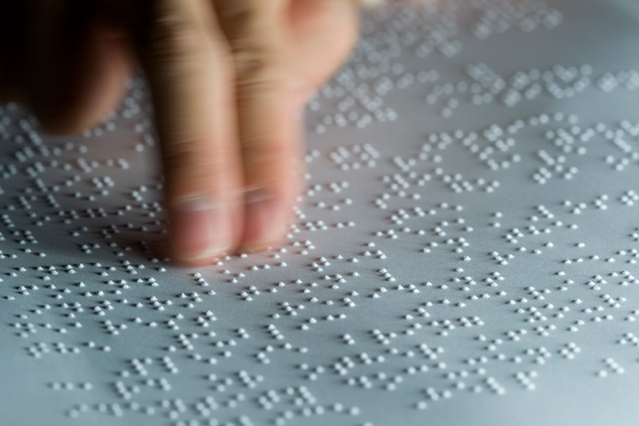
MIT researchers have been working on a new low-power chip that processes 3-D camera data in order to create a wearable device to guide the visually impaired.
The low-power chip consumes only one-thousandth as much power as a conventional computer processor while executing the same algorithms and can 3D camera data that could help visually impaired people navigate their environments.

With the help of the new chip, the researchers developed prototype of a complete navigation system for the visually impaired. The device is about the size of a binoculars case and can be worn around the neck. MIT received an experimental 3D camera from Texas Instruments to construct the prototype. The device allows a user to carry a mechanical Braille interface, which was developed at MIT’s Computer Science and Artificial Intelligence Laboratory (CSAIL), to relay obstacle and distance information while he or she is moving around the environment.
“There was some prior work on this type of system, but the problem was that the systems were too bulky, because they require tons of different processing,” said Dongsuk Jeon, a postdoc at MIT’s Microsystems Research Laboratories (MTL) when the work was done. “We wanted to miniaturize this system and realized that it is critical to make a very tiny chip that saves power but still provides enough computational power.”
Previous work, sponsored by the Andrea Bocelli Foundation, which was founded by the blind singer Andrea Bocelli, resulted in an algorithm for converting 3D camera data into useful navigation aids. The team used these algorithms in the development of its prototype. Employing the algorithms, the output of any 3D camera can be converted into a 3D representation called a “point cloud,” which depicts the spatial locations of individual points on the surfaces of objects, according to MIT. The original algorithm grouped points together in order to determine the flat surfaces in a particular environment and then measured the clear walking paths in many directions.
For the new device, the researchers modified this algorithm for power conservation purposes.
Instead, they worked on little tricks to reduce the chip’s power consumption and included a circuity that can compare new frames of data that are captured by the prototype’s camera with the ones that came right before. So if not much changes, the chip sends a signal to the camera to lower its frame rate, which would save on power.
The MIT team hopes to shrink the prototype down in the future.
Story via MIT.

Comments are closed, but trackbacks and pingbacks are open.